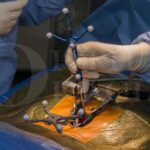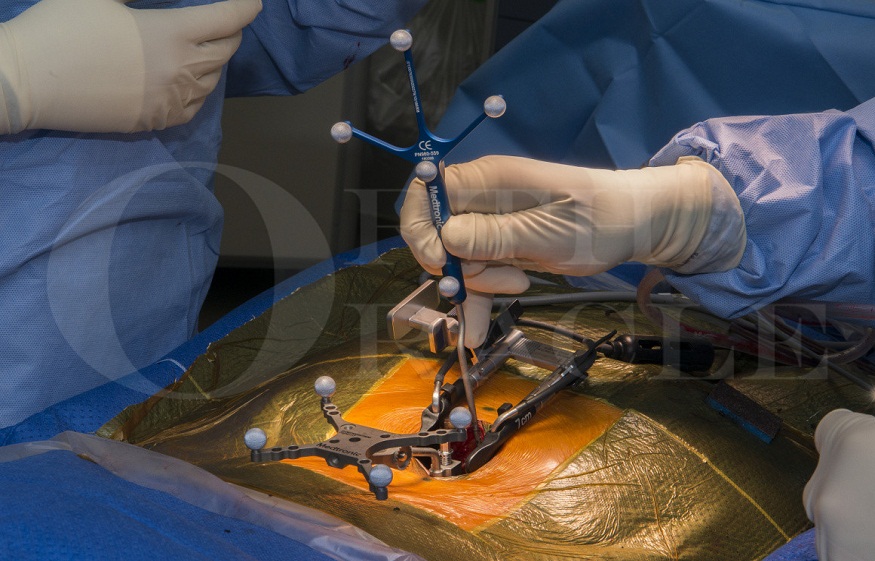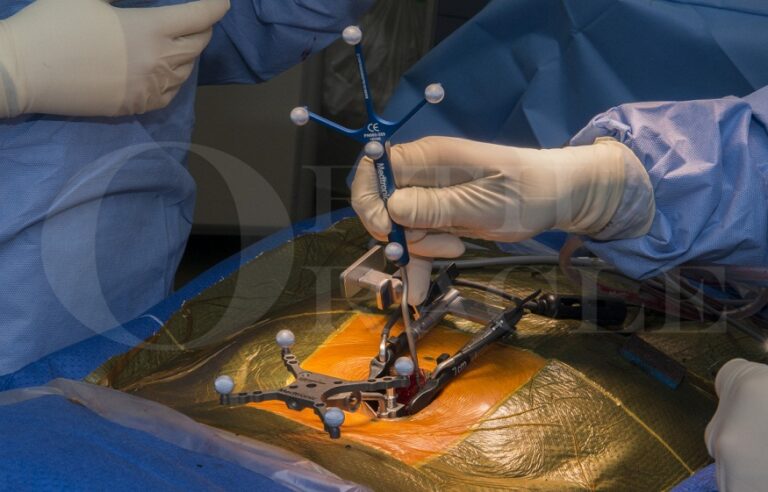Minimally invasive spinal fusion surgery (MIS) has revolutionized the treatment of spinal conditions, providing patients with a far less invasive option compared to traditional open surgeries. By focusing on smaller incisions, minimal muscle disruption and faster recovery times, MIS can help reducesurgical risks significantly. The advancements in technology are driving the field forward, making procedures even more precise while lowering the chances of complications. Dr. Larry Davidson, an expert in spinal care,recognizes that the future of MIS holds great promise, with emerging techniques and tools poised to enhance precision, improve patient outcomes and further shorten recovery times.
The Evolution of Minimally Invasive Spinal Fusion
Traditionally, spinal fusion surgeries required large incisions to expose the spine, leading to significant muscle damage, longer recovery periods and an increased risk of complications such as infection or excessive blood loss. The development of minimally invasive techniques has dramatically changed this landscape. By utilizing smaller incisions and advanced imaging technologies, surgeons can access the spine with minimal disruption to surrounding tissues.
One key advancement in MIS is the use of tubular retractors, which allow surgeons to work through a small incision while maintaining a clear view of the operative field. These retractors help to reduce muscle trauma and postoperative pain, enabling patients to recover more quickly. Additionally, the use of specialized surgical tools and real-time imaging guidance, such as fluoroscopy and intraoperative CT scans, ensures greater accuracy in implant placement and can help reducethe risk of complications.
Robotics and AI: Enhancing Precision in MIS
The integration of robotics and artificial intelligence (AI) is playing a pivotal role in the future of minimally invasive spinal fusion surgery. Robotic-assisted systems, such as Mazor X and ExcelsiusGPS, provide surgeons with enhanced precision and control during the procedure. These systems use preoperative imaging and real-time feedback to help guide the surgeon’s instruments, ensuring accurate placement of implants and reducing the risk of human error.
AI is also being increasingly incorporated into surgical planning and execution. By analyzing data from past surgeries and patient outcomes, AI can help surgeons develop personalized treatment plans that take into accounteach patient’s unique anatomical and biomechanical factors. This not only improves the precision of the surgery but also enhances the overall success rate, leading to fewer complications and better long-term outcomes.
3D Imaging and Navigation: Transforming Surgical Visualization
One of the most significant advancements in minimally invasive spinal fusion surgery is the development of 3D imaging and navigation systems. These technologies allow surgeons to visualize the spine in greater detail, providing a more accurate representation of the patient’s anatomy. By using intraoperative 3D imaging, surgeons can see the exact position of their instruments in real-time, reducing the likelihood of misplacement and improving surgical outcomes.
Navigation systems, combined with 3D imaging, allow for highly accurate implant placement, particularly in complex cases such as scoliosis or spinal deformities. These systems guide the surgeon’s hand, ensuring that screws and other hardware are positioned correctly with minimal guesswork. This level of precision reduces the risk of complications and enhances the overall safety of the procedure.
Endoscopic Techniques: Minimizing Trauma
Endoscopic spinal fusion surgery is another promising advancement in the field of MIS. This technique involves the use of a small camera, or endoscope, which is inserted through a tiny incision to provide a clear view of the spine. Surgeons can then perform the fusion with minimal disruption to surrounding muscles and tissues.
Endoscopic techniques canhelp reduce postoperative pain, minimize scarring and allow patients to return to normal activities more quickly. This approach is particularly beneficial for patients who may not be candidates for traditional open surgery due to age, underlying health conditions, or the complexity of their spinal condition. As endoscopic tools and techniques continue to evolve, they are expected to become a standard option for many spinal fusion procedures.
Minimally Invasive Fusion Materials: Enhancing Healing and Fusion Rates
The future of minimally invasive spinal fusion surgery focuses on advancing both surgical techniques and fusion materials. While biocompatible materials like titanium and polymers are standard due to their strength and durability, researchers are exploring new options to enhance bone growth and fusion rates. 3D-printed implants, custom-designed to match a patient’s anatomy, offer improved fit and stability, reducing the risk of implant failure and accelerating healing. Additionally, porous structures in 3D-printed materials encourage bone integration, minimizing the need for revision surgeries. Bioactive materials are also emerging, promoting natural bone regeneration and speeding up the fusion process.
Reducing Recovery Time and Surgical Risks
The primary goal of minimally invasive spinal fusion surgery is to reduce recovery time and minimize surgical risks. Smaller incisions and less tissue disruption result in less postoperative pain, enabling quicker rehabilitation and a faster return to normal activities, which improves quality of life and reduces healthcare costs. Additionally, minimally invasive techniques lower the risk of complications like infection, blood loss and tissue damage. Advanced imaging and navigation systems allow surgeons to operate with greater precision, reducing errors and enhancing outcomes. As these technologies improve, MIS will become an even safer, more effective option for a broader range of patients.
The Future of MIS: Personalized and Data-Driven Approaches
Personalized, data-driven approaches will likely shape the future of minimally invasive spinal fusion surgery. With the growing use of AI, robotics and 3D imaging, surgeons will be able to tailor each procedure to the patient’s specific needs, resulting in more successful outcomes and fewer complications. These advancements are expected to support better preoperative planning, helping surgeons anticipate potential challenges and tailor their approach accordingly.
Additionally, as research into new materials and fusion techniques continues, patients will benefit from faster healing times, stronger fusions and a reduced risk of complications. The ongoing development of minimally invasive technologies holds great promise for improving patient care and advancing spinal fusion surgery in the coming years.
The future of minimally invasive spinal fusion surgery is bright, with advancements in robotics, AI, 3D imaging and endoscopic techniques leading the way toward safer, more precise and less invasive procedures. As these technologies continue to evolve, patients will experience shorter recovery times, reduced surgical risks and better overall outcomes. Surgeons like Dr. Larry Davidson have observed that minimally invasive spinal fusion surgery may become the standard of care for many spinal conditions.



















+ There are no comments
Add yours